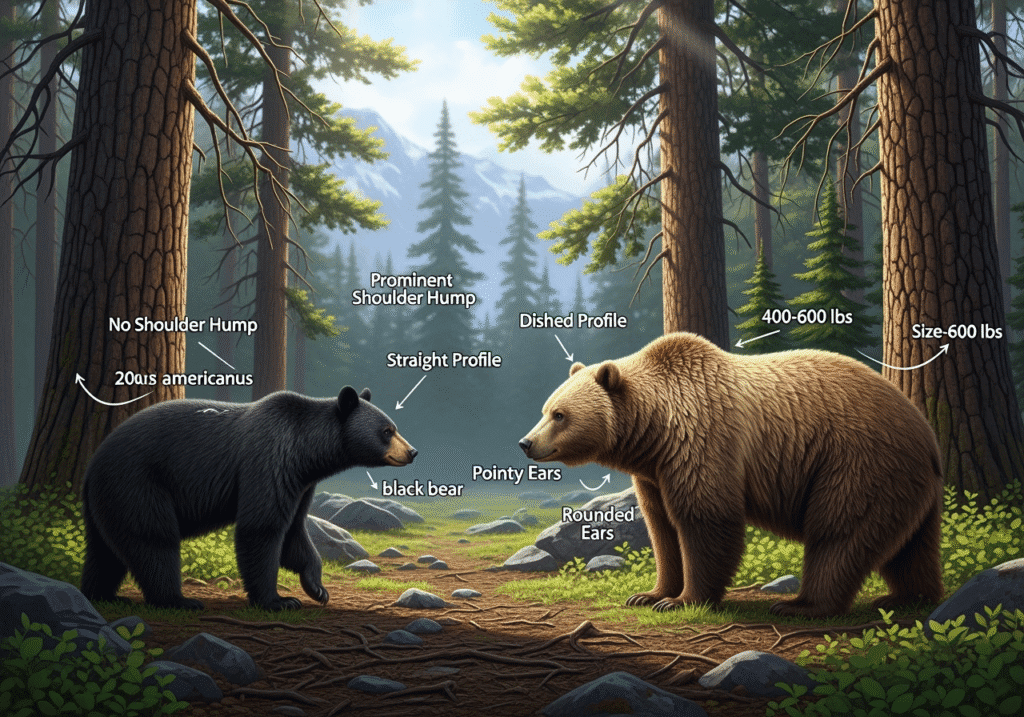
Bear Safety in the Canadian Wilderness: How to Identify, Avoid, and Respond to Bears
If you love the Canadian outdoors, you’re sharing the wild with some of its most iconic residents: bears. Whether you’re hiking, hunting, fishing, or camping, understanding bear safety isn’t just about protecting yourself—it’s about respecting wildlife and ensuring everyone (including the bears) stays safe.
Why Bear Safety Matters
Canada is home to three bear species: black bears, grizzly bears (also called brown bears), and polar bears (found mostly in the far north). For most Canadians, black bears and grizzlies are the ones you’re most likely to encounter. While attacks are rare, encounters do happen—and knowing what to do makes all the difference.
Quick Facts:
- Canada has the world’s second-largest bear population after Russia.
- Black bears are found coast-to-coast, while grizzlies are mainly in the west and north.
- Most negative encounters happen when a bear is surprised or attracted by food.
How to Tell the Difference: Black Bear vs. Grizzly Bear
Knowing which bear you’re dealing with is crucial because their behavior—and your response—can be very different.
Physical Differences
Black Bear
- Size: 100–300 lbs (though some can be much larger)
- Color: Not always black! Can be brown, cinnamon, or even blonde.
- Face: Straight profile from forehead to nose.
- Ears: Tall and pointy.
- Shoulders: No prominent shoulder hump.
- Claws: Short (about 1–2 cm), curved, and dark.
- Tracks: Toes form a gentle arc; claws often not visible in tracks.
Grizzly Bear
- Size: 300–800 lbs (can be even bigger in coastal areas)
- Color: Usually brown, but can vary from blonde to dark brown.
- Face: Dished, concave profile between eyes and nose.
- Ears: Short and rounded.
- Shoulders: Very prominent hump (muscle used for digging).
- Claws: Long (5–10 cm), light-colored, and straight.
- Tracks: Toes form a straighter line; claws are usually visible, far ahead of toes.
Visual Comparison Table
| Feature | Black Bear | Grizzly Bear |
|---|---|---|
| Shoulder Hump | None | Prominent |
| Face Profile | Straight | Dished/Concave |
| Ears | Tall, pointy | Short, rounded |
| Claws | Short, curved | Long, straight |
| Track Toes | Arc | Straight line |
Photos and Diagrams
(If you’d like a graphic or photo for this section, just let me know!)
Bear Behavior: What to Expect
Black Bear Behavior
- Generally shy and will avoid humans if possible.
- May climb trees to escape danger.
- If surprised, may “bluff charge” (run toward you but veer off at the last second).
- Food-motivated bears can become bold if they associate humans with food.
Grizzly Bear Behavior
- More likely to stand their ground or react aggressively if surprised, especially with cubs nearby.
- Less likely to climb trees (adults are too large).
- Known for “bluff charges” and sometimes real charges if they feel threatened.
- Highly protective mothers—never approach cubs.
Did you know?
Grizzly bears have a bite force strong enough to crush a bowling ball!
What to Do If You See a Bear: Step-by-Step
1. If the Bear Hasn’t Noticed You
- Stop and stay calm.
- Quietly back away the way you came, keeping your eyes on the bear.
- Never run—this can trigger a chase.
2. If the Bear Sees You
- Stand your ground. Wave your arms slowly and speak in a calm, firm voice.
- Let the bear know you’re human—don’t scream or make sudden movements.
- If you’re with others, group together to appear larger.
What to Do When Face-to-Face: Black Bear vs. Grizzly Bear
Black Bear Encounters
- If the bear approaches: Stand your ground. Make yourself look bigger—raise your arms, hold up your jacket, and shout assertively.
- If the bear charges: Most charges are bluffs. Use bear spray if the bear gets within 10 metres.
- If the bear attacks: FIGHT BACK. Use anything you can—sticks, rocks, your fists. Aim for the face and muzzle. Black bears are more likely to be deterred if you fight aggressively.
Grizzly Bear Encounters
- If the bear approaches: Stand your ground. Speak calmly. Do not make eye contact (can be perceived as a threat).
- If the bear charges: Prepare your bear spray. Stand still until the bear veers off or is very close.
- If the bear attacks: PLAY DEAD. Lie flat on your stomach, legs spread apart, hands behind your neck. Protect your vital organs. Remain still until the bear leaves—if the attack continues, then fight back as a last resort.
Why the difference?
Black bears are more likely to be predatory, so fighting back works. Grizzlies usually attack to neutralize a threat (especially with cubs), so playing dead shows you’re not a threat.
Bear Spray: Your Best Defense
- Carry bear spray where it’s easily accessible (not in your pack).
- Practice removing the safety clip.
- Use only if the bear is within 10 metres—aim for the face.
Fact:
Bear spray is effective against both black bears and grizzlies, with a success rate of over 90% in stopping aggressive bears.
Extra Bear Safety Tips
- Travel in groups: Bears are less likely to approach groups.
- Make noise: Sing, talk, or use bear bells, especially in dense brush or near running water.
- Store food properly: Use bear-proof containers or hang food at least 4 metres off the ground and 1.5 metres from tree trunks.
- Camp smart: Cook and eat away from your tent. Never store food or scented items in your tent.
- Avoid bear hotspots: Steer clear of animal carcasses, berry patches, and thick willows—prime bear feeding spots.
What About Cubs?
If you see a bear cub, leave immediately—the mother is almost certainly nearby and will defend her young fiercely. Never approach or try to photograph cubs.
Final Thoughts
Bear safety isn’t about fear—it’s about respect, awareness, and preparation. By learning how to tell the difference between black bears and grizzlies, understanding their behaviors, and knowing exactly what to do in a face-to-face encounter, you’ll be ready for any adventure in Canada’s wild spaces.
Ready to gear up for safe adventures?
Check out our Outdoor Hunting Camouflage Set and thermal base layers—built for comfort, safety, and durability in bear country and beyond.

